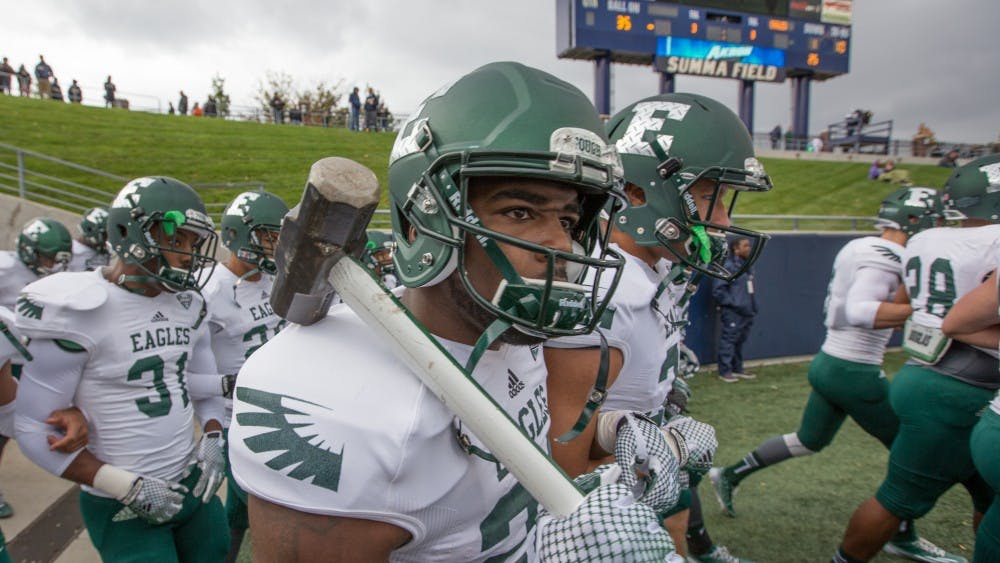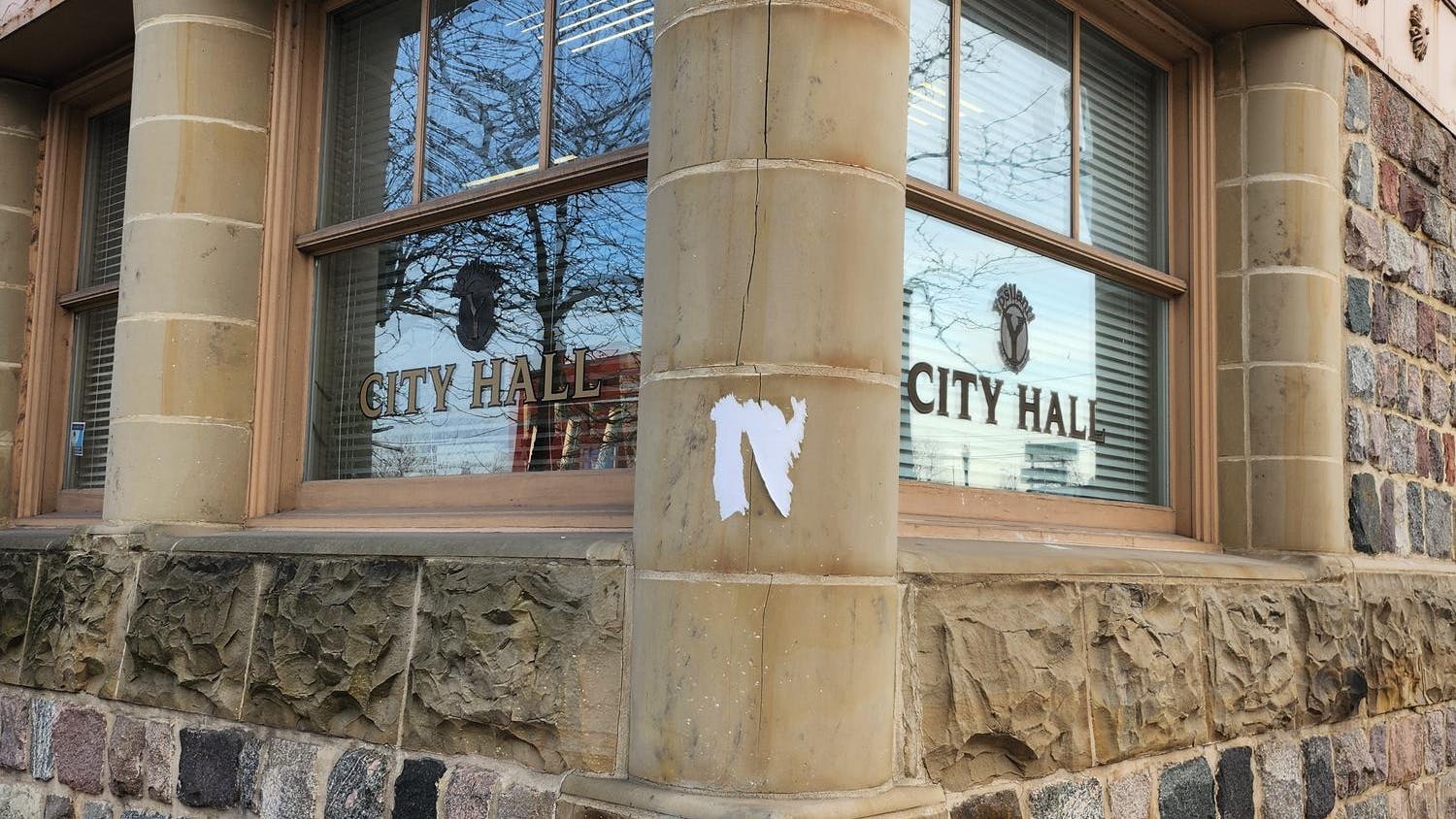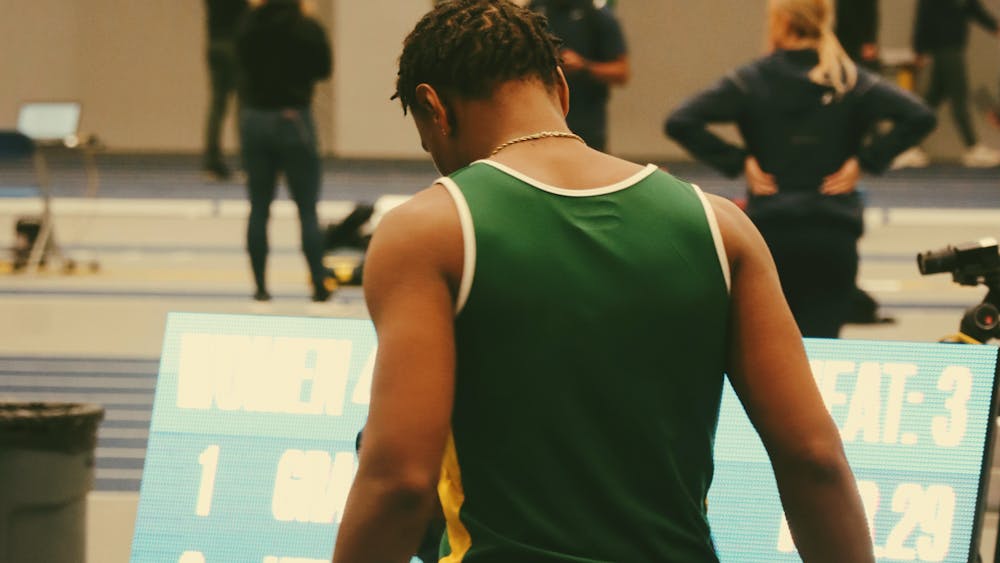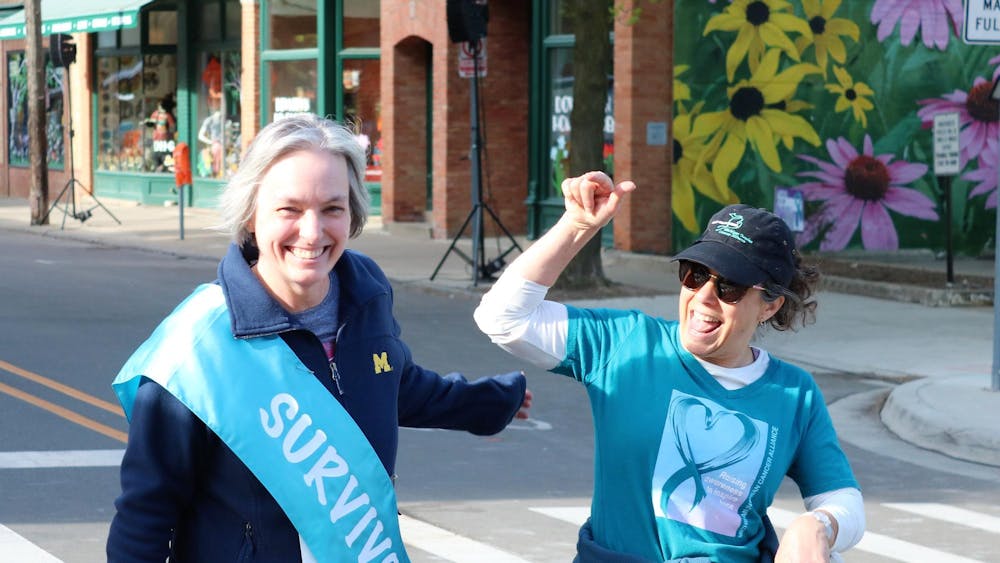Last Thursday, Eastern Michigan University’s Women’s Resource Center hosted Meet the Movement as part of ongoing work for Human Trafficking Awareness Month.
Meet the Movement began with a film screening of the documentary “Chosen,” which focused on human trafficking. This was followed by a panel discussion in which audience members were given the opportunity to learn more about the issue, ask questions and find out ways to get involved.
Panel members included James Klawitter of the Department of Homeland Security, EMU lecturer David Manville and Michigan Abolitionist Project representative Luke Hassevoort. Manville teaches a special course on human trafficking, and “Chosen” was provided by MAP as part of an ongoing event to raise awareness.
Human trafficking, specifically the recruitment of young girls for the purpose of sale, happens everywhere. Much of the media related to it is centered on inner city areas where poverty, broken homes and other outside factors push young girls into the lifestyle. “Chosen” portrays another side to the world of human trafficking as it documents the lives of two young girls recruited by traffickers.
Briana, a 17-year-old high school student, was the first of the two girls portrayed in the film.
Briana was a straight-A student, attending college courses in high school and working as a waitress after classes. Briana, like many other young girls across the country, was picked out by traffickers and narrowly escaped what could have been a terrible fate when friends and family stepped in at the last moment.
According to the film, traffickers often scout their victims and obtain detailed information about the target such as their home address, interests and hobbies in order to lure them into the illegal sex industry. The traffickers are charming, charismatic gentlemen at first, showering vulnerable girls with gifts and compliments, taking them out to dinner and movies. Eventually they fall in love with the men, believing that they have an older boyfriend and feeding off the dreams he has implanted in her thoughts.
Unlike many other films where the stories take place in areas already littered with poverty and crime, Briana’s case came from a small town in a quiet area. Briana said in the film, “I didn’t know what sex trafficking was until I was in the middle of it.” The film coveys the message that traffickers are on the lookout everywhere young girls go, such as coffee shops and malls. No area is safe, not even school.
Briana was one of the lucky ones, pulled out by friends and family before she was too far into the lifestyle to easily get out, but for millions of women around the world this is not the case.
After the screening, panel members discussed the issue of human trafficking in more detail, as well as providing more information about their fields and backgrounds for the audience.
Referring to the video, Klawitter said, “I can’t tell you how many times I have seen stories similar to that. Lots of peer pressure, lots of factors that go into how they are forced to do what they have to do.”
Manville enlightened attendees to the many forms of trafficking that exist, including labor trafficking. A challenge was presented to the audience to check their items of clothing when they returned home to see exactly where those items came from. Chances are, according to Manville, that much of the clothing in students’ wardrobes was made by very young children in slave-like conditions. He also pointed out that anyone in the audience wearing a diamond could likely be wearing something mined out of a cave by a young child in forced into slave labor.
The trafficking of young girls into the sex industry is yet another form of slavery. The girls are brainwashed into remaining with these pimps or traffickers despite harsh conditions, convinced they are meant to live this type of life. Some are told they will not amount to anything else and literally were born to become a sex slave. Isolation is used to keep the girls’ friends and families from stepping in, leaving the victims to feel as if there is nowhere else to go.
The film and panel discussion prompted audience members to ask about how they too can get involved to help fight human trafficking. According to the film, there are four ways that young men and women can assist in saving a life:
1) Know what human trafficking is
2) Know the signs, which include a friend suddenly touting expensive gifts, new clothing and
having an older boyfriend they wish to keep a secret
3) Don’t be afraid to tell
4) Take action right away
Students can get involved in many creative ways, according to the panel members. Locating an organization such as EMU’s newly formed group, Unmasked, is a great way to start. Organizations like Unmasked raise awareness through educational fliers, conferences and activities, as well as raise money through fundraisers such as charity runs.
The central theme of both the film and panel discussion was that education and awareness are two powerful tools in the ongoing fight against human trafficking in the United States.










